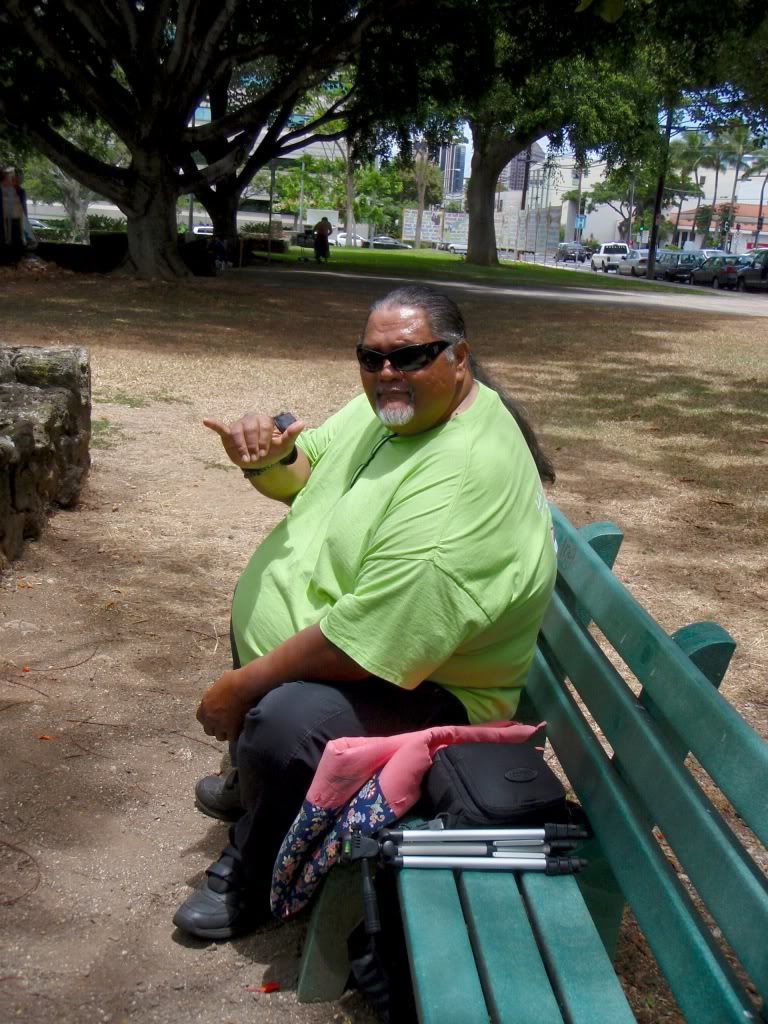AKAKA BILL IS JUST THE CONTINUATION OF "MANIFEST DESTINYSHOW ME THE TREATY !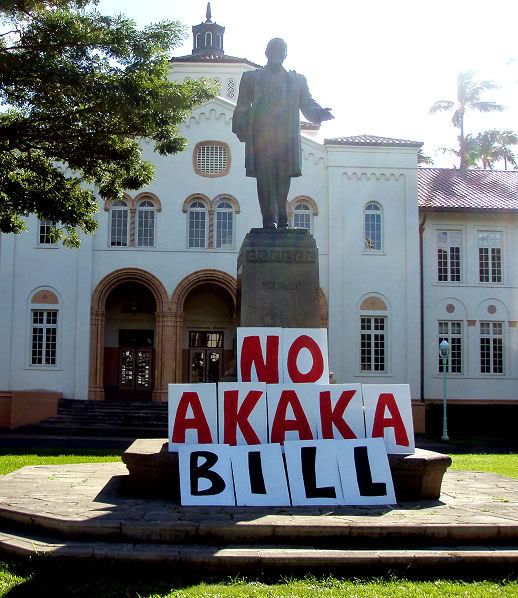
Manifest Destiny
http://en.wikipedia.org/wiki/Manifest_destiny
Manifest Destiny is a term that was used in the 19th century to designate the belief that the United States was destined, even divinely ordained,[1] to expand across the North American continent, from the Atlantic seaboard to the Pacific Ocean. Sometimes Manifest Destiny was interpreted so broadly as to include the eventual absorption of all North America: Canada, Mexico, Cuba and Central America. Advocates of Manifest Destiny believed that expansion was not only ethical but that it was readily apparent ("manifest") and inexorable ("destiny"). Although initially used as a catch phrase to inspire the United States' expansion across the North American continent, the 19th century phrase eventually became a standard historical term. The term, which first appeared in print in 1839, was used in 1845 by a New York journalist, John L. O'Sullivan, to urge for the annexation of Texas.[2] Thereafter, it was used to encourage American settlement of European colonial and Indian lands in the Great Plains and the west. It was revived in the 1890s, this time with Republican supporters, as a theoretical justification for U.S. expansion outside of North America. The term fell out of usage by U.S. policy makers early in the 20th century, but some commentators believe that aspects of Manifest Destiny, particularly the belief in an American "mission" to promote and defend democracy throughout the world, continues to have an influence on American political ideology.[3] Context and interpretations
Manifest Destiny was always a general notion rather than a specific policy. The term combined a belief in expansionism with other popular ideas of the era, including American exceptionalism, Romantic nationalism, and a belief in the natural superiority of what was then called the "Anglo-Saxon race". While many writers focus primarily upon American expansionism when discussing Manifest Destiny, others see in the term a broader expression of a belief in America's "mission" in the world, which has meant different things to different people over the years. This variety of possible meanings was summed up by Ernest Lee Tuveson, who wrote: A vast complex of ideas, policies, and actions is comprehended under the phrase 'Manifest Destiny'. They are not, as we should expect, all compatible, nor do they come from any one source.[4] The concept of the Manifest Destiny has acquired a variety of meanings over the years, and its inherent ambiguity has been part of its power. In the generic political sense, however, it was usually used to refer to the idea that the American government was "destined" to establish uninterrupted political authority across the entire North American continent, from one ocean to the other.
Journalist John L. O'Sullivan, an influential advocate for the Democratic Party, wrote an article in 1839 which, while not using the term "Manifest Destiny", did predict a "divine destiny" for the United States based upon values such as equality, rights of conscience, and personal enfranchisement-- "to establish on earth the moral dignity and salvation of man". This destiny was not explicitly territorial, but O'Sullivan predicted that the United States would be one of a "Union of many Republics" sharing those values.[5] Six years later O'Sullivan wrote another essay which first used the phrase Manifest Destiny. In 1845, he published a piece entitled Annexation in the Democratic Review,[6] in which he urged the United States to annex the Republic of Texas, not only because Texas desired this, but because it was "our manifest destiny to overspread the continent allotted by Providence for the free development of our yearly multiplying millions".[7] Amid much controversy, Texas was annexed shortly thereafter, but O'Sullivan's first usage of the phrase "Manifest Destiny" attracted little attention.[8] O'Sullivan's second use of the phrase became extremely influential. On December 27, 1845 in his newspaper the New York Morning News, O'Sullivan addressed the ongoing boundary dispute with Great Britain in the Oregon Country. O'Sullivan argued that the United States had the right to claim "the whole of Oregon": And that claim is by the right of our manifest destiny to overspread and to possess the whole of the continent which Providence has given us for the development of the great experiment of liberty and federated self-government entrusted to us.[9] That is, O'Sullivan believed that Providence had given the United States a mission to spread republican democracy ("the great experiment of liberty") throughout North America. Because Britain would not use Oregon for the purposes of spreading democracy, thought O'Sullivan, British claims to the territory should be overruled. O'Sullivan believed that Manifest Destiny was a moral ideal (a "higher law") that superseded other considerations.[10] O'Sullivan's original conception of Manifest Destiny was not a call for territorial expansion by force. He believed that the expansion of the United States would happen without the direction of the U.S. government or the involvement of the military. After "Anglo-Saxons" emigrated to new regions, they would set up new democratic governments, and then seek admission to the United States, as Texas had done. In 1845, O'Sullivan predicted that California would follow this pattern next, and that Canada would eventually request annexation as well. He disapproved of the outbreak of the Mexican-American War in 1846, although he came to believe that the outcome would be beneficial to both countries.[11] Ironically, O'Sullivan's term became popular only after it was criticized by Whig opponents of the Polk administration. On January 3, 1846, Representative Robert Winthrop ridiculed the concept in Congress, saying "I suppose the right of a manifest destiny to spread will not be admitted to exist in any nation except the universal Yankee nation." Winthrop was the first in a long line of critics who suggested that advocates of Manifest Destiny were citing "Divine Providence" for justification of actions that were motivated by chauvinism and self-interest. Despite this criticism, expansionists embraced the phrase, which caught on so quickly that its origin was soon forgotten. O'Sullivan died in obscurity in 1895, just as his phrase was being revived. In 1927, a historian determined that the phrase had originated with him.[12] Themes and influences
Historian William E. Weeks has noted that three key themes were usually touched upon by advocates of Manifest Destiny:
the virtue of the American people and their institutions;
the mission to spread these institutions, thereby redeeming and remaking the world in the image of the U.S.; and
the destiny under God to accomplish this work.[13] We have it in our power to begin the world over again. A situation, similar to the present, hath not happened since the days of Noah until now. The birthday of a new world is at hand...
Many Americans agreed with Paine, and came to believe that the United States had embarked upon a special experiment in freedom and democracy—and a rejection of Old World monarchy in favor of republicanism—an innovation of world historical importance. President Abraham Lincoln's description, in his December 1, 1862 message to Congress, of the United States as "the last, best hope of Earth" is a well-known expression of this idea. Lincoln's Gettysburg Address, in which he interpreted the Civil War as a struggle to determine if any nation with America's ideals could survive, has been called by historian Robert Johannsen "the most enduring statement of America's Manifest Destiny and mission".[14] Not all Americans who believed that the United States was a divinely favored nation thought that it ought to expand. Whigs especially argued that the "mission" of the United States was only to serve as virtuous example to the rest of the world. If the United States was successful as a shining "city on a hill," people in other countries would seek to establish their own democratic republics. Thomas Jefferson initially did not believe it necessary that the United States should grow in size, since he predicted that other, similar republics would be founded in North America, forming what he called an "empire for liberty." However, with the Louisiana Purchase in 1803, which doubled the size of the United States, Jefferson set the stage for the continental expansion of the United States. Many began to see this as the beginning of a new "mission"—what Andrew Jackson in 1843 famously described as "extending the area of freedom." As more territory was added to the United States in the following decades, whether or not "extending the area of freedom" also meant extending the institution of slavery became a central issue in a growing divide over the interpretation of America's "mission." Effect on continental expansion
The phrase "Manifest Destiny" is most often associated with the territorial expansion of the United States from 1812 to 1860. This era, from the end of the War of 1812 to the beginning of the American Civil War, has been called the "Age of Manifest Destiny." During this time, the United States expanded to the Pacific Ocean—"from sea to shining sea"—largely defining the borders of the contiguous United States as they are today.[15]
Continentalism
The nineteenth century belief that the United States would eventually encompass all of North America is known as "continentalism".[16] An early proponent of this idea was John Quincy Adams, a leading figure in U.S. expansion between the Louisiana Purchase in 1803 and the Polk administration in the 1840s. In 1811, Adams wrote to his father: The whole continent of North America appears to be destined by Divine Providence to be peopled by one nation, speaking one language, professing one general system of religious and political principles, and accustomed to one general tenor of social usages and customs. For the common happiness of them all, for their peace and prosperity, I believe it is indispensable that they should be associated in one federal Union.[17] The Monroe Doctrine and Manifest Destiny were closely related ideas: historian Walter McDougall calls Manifest Destiny a corollary of the Monroe Doctrine, because while the Monroe Doctrine did not specify expansion, expansion was necessary in order to enforce the Doctrine. Concerns in the United States that European powers (especially Great Britain) were seeking to acquire colonies or greater influence in North America led to calls for expansion in order to prevent this. In his influential 1935 study of Manifest Destiny, Albert Weinberg wrote that "the expansionism of the [1830s] arose as a defensive effort to forestall the encroachment of Europe in North America."[18]
British North America
Although Manifest Destiny was primarily directed at territory inhabited by Mexicans and American Indians, the concept played a role in U.S. relations with British North America (later Canada) to the north. From the time of the American Revolution, the United States had expressed an interest in expelling the British Empire from North America. Failing to do that in both the American Revolutionary War and the War of 1812, Americans came to accept the British presence on their northern border, but fears of possible British expansion elsewhere in North America were a recurrent theme of Manifest Destiny.
Before 1815
These attempts to expel the British Empire from North America are sometimes cited as early examples of Manifest Destiny in action. Some scholars, however, including Canadian historian Reginald Stuart, argue that these events were different in character from those during the "Era of Manifest Destiny." Before 1815, writes Stuart, "what seemed like territorial expansionism actually arose from a defensive mentality, not from ambitions for conquest and annexation."[19] From this point of view, Manifest Destiny was not a factor in the outbreak of the War of 1812, but rather emerged as a popular belief in the years after the war.[19]
Filibustering in Canada
Americans became increasingly accepting of the presence of British colonies to the north after the War of 1812, although Anglophobia continued to be widespread in the United States. Many Americans, especially those along the border, were hopeful that the Rebellions of 1837 would bring an end to the British Empire in North America and the establishment of a republican government in Canada. Of those events John O'Sullivan wrote: "If freedom is the best of national blessings, if self-government is the first of national rights, ... then we are bound to sympathise with the cause of the Canadian rebellion."[20] Americans like O'Sullivan viewed the Rebellions as a reprise of the American Revolution, and—unlike most Canadians at the time—considered Canadians to be living under oppressive foreign rule. Despite this sympathy with the cause of the rebels, belief in Manifest Destiny did not result in widespread American reaction to the Rebellions, in part because the Rebellions were over so quickly. O'Sullivan, for his part, advised against U.S. intervention. Some American "filibusters"—unauthorized volunteer soldiers often motivated by a belief in Manifest Destiny—went to Canada to lend aid to the rebels, but President Martin Van Buren sent General Winfield Scott to arrest the filibusters and keep peace on the border. Some filibusters persisted in secretive groups known as the Hunter Patriots, and tried to stir up war in order to "liberate" Canada—the so-called "Patriot War" was one such event—but American sentiment and official government policy were against these actions. The Fenian raids after the American Civil War shared some resemblances to the actions of the Hunters, but were otherwise unrelated to the idea of Manifest Destiny or any policy of American expansionism.[21]
"All Oregon"
Manifest Destiny played its most important role in, and was coined during the course of, the Oregon boundary dispute with Great Britain. The Anglo-American Convention of 1818 had provided for the joint occupation of the Oregon Country, and thousands of Americans migrated there in the 1840s over the Oregon Trail. The British rejected a proposal by President John Tyler to divide the region along 49th parallel, and instead proposed a boundary line further south along the Columbia River, which would have made what is now the state of Washington part of British North America. Advocates of Manifest Destiny protested and called for the annexation of the entire Oregon Country up to the Alaska line (54°40ʹ N). Presidential candidate James K. Polk used this popular outcry to his advantage, and the Democrats called for the annexation of "All Oregon" in the 1844 U.S. Presidential election. As president, however, Polk renewed the earlier offer to divide the territory along the 49th parallel, to the dismay of the most ardent advocates of Manifest Destiny. When the British refused the offer, American expansionists responded with slogans such as "The Whole of Oregon or None!" and "Fifty-Four Forty or Fight!", referring to the northern border of the region. (The latter slogan is often mistakenly described as having been a part of the 1844 presidential campaign.) When Polk moved to terminate the joint occupation agreement, the British finally agreed to divide the region along the 49th parallel, and the dispute was settled by the Oregon Treaty of 1846. Despite the earlier clamor for "All Oregon," the treaty was popular in the U.S. and was easily ratified by the Senate, particularly because the United States was by that time at war with Mexico. Many Americans believed that the Canadian provinces would eventually merge with the United States anyway, and that war was unnecessary—and counterproductive—in fulfilling that destiny. The most fervent advocates of Manifest Destiny had not prevailed along the northern border because, according to Reginald Stuart, "the compass of Manifest Destiny pointed west and southwest, not north, despite the use of the term 'continentalism'."[22]
Mexico and Texas
Manifest Destiny proved to be more consequential in U.S. relations with Mexico. In 1836, the Republic of Texas declared independence from Mexico and, after the Texas Revolution, sought to join the United States as a new state. This was an idealized process of expansion which had been advocated from Jefferson to O'Sullivan: newly democratic and independent states would request entry into the United States, rather than the United States extending its government over people who did not want it. The annexation of Texas was controversial as it would add another slave state to the Union. Presidents Andrew Jackson and Martin Van Buren declined Texas's offer to join the United States in part because the slavery issue threatened to divide the Democratic Party. Before the election of 1844, Whig candidate Henry Clay and the presumed Democratic candidate, ex-President Van Buren, both declared themselves opposed to the annexation of Texas, each hoping to keep the troublesome topic from becoming a campaign issue. This unexpectedly led to Van Buren being dropped by the Democrats in favor of Polk, who favored annexation. Polk tied the Texas annexation question with the Oregon dispute, thus providing a sort of regional compromise on expansion. (Expansionists in the North were more inclined to promote the occupation of Oregon, while Southern expansionists focused primarily on the annexation of Texas.) Although elected by a very slim margin, Polk proceeded as if his victory had been a mandate for expansion.
"All Mexico"
After the election of Polk, but before he took office, Congress approved the annexation of Texas. Polk moved to occupy a portion of Texas which was also claimed by Mexico, paving the way for the outbreak of the Mexican-American War on April 24, 1846. With American successes on the battlefield, by the summer of 1847 there were calls for the annexation of "All Mexico," particularly among Eastern Democrats, who argued that bringing Mexico into the Union was the best way to ensure future peace in the region.[23] This was a controversial proposition for two reasons. First, idealistic advocates of Manifest Destiny like John L. O'Sullivan had always maintained that the laws of the United States should not be imposed on people against their will. The annexation of "All Mexico" would be a violation of this principle. And secondly, the annexation of Mexico was controversial because it would mean extending U.S. citizenship to millions of Mexicans. Senator John C. Calhoun of South Carolina, who had approved of the annexation of Texas, was opposed to the annexation of Mexico, as well as the "mission" aspect of Manifest Destiny, for racial reasons. He made these views clear in a speech to Congress on January 4, 1848: [W]e have never dreamt of incorporating into our Union any but the Caucasian race—the free white race. To incorporate Mexico, would be the very first instance of the kind, of incorporating an Indian race; for more than half of the Mexicans are Indians, and the other is composed chiefly of mixed tribes. I protest against such a union as that! Ours, sir, is the Government of a white race.... We are anxious to force free government on all; and I see that it has been urged ... that it is the mission of this country to spread civil and religious liberty over all the world, and especially over this continent. It is a great mistake.[24] This debate brought to the forefront one of the contradictions of Manifest Destiny: on the one hand, while racist ideas inherent in Manifest Destiny suggested that Mexicans, as non-whites, were a lesser race and thus not qualified to become Americans, the "mission" component of Manifest Destiny suggested that Mexicans would be improved (or "regenerated," as it was then described) by bringing them into American democracy. Racism was used to promote Manifest Destiny, but, as in the case of Calhoun and the resistance to the "All Mexico" movement, racism was also used to oppose Manifest Destiny.[25] The controversy was eventually ended by the Mexican Cession, which added the territories of Alta California and Nuevo México to the United States, both more sparsely populated than the rest of Mexico. Like the "All Oregon" movement, the "All Mexico" movement quickly abated. Historian Frederick Merk, in Manifest Destiny and Mission in American History: A Reinterpretation (1963), argued that the failure of the "All Oregon" and "All Mexico" movements indicates that Manifest Destiny had not been as popular as historians have traditionally portrayed it to have been. Merk wrote that, while belief in the beneficent "mission" of democracy was central to American history, aggressive "continentalism" were aberrations supported by only a very small (but influential) minority of Americans. Merk's interpretation is probably still a minority opinion; scholars generally see Manifest Destiny, at least in the 1840s, as a popular belief among Democrats and an unpopular one among Whigs.
Filibustering in the South
After the Mexican-American War ended in 1848, disagreements over the expansion of slavery made further territorial annexation too divisive to be official government policy. Many Northerners were increasingly opposed to what they believed to be efforts by Southern slave owners—and their friends in the North—to expand slavery at any cost. The proposal of the Wilmot Proviso during the war, and the emergence of various "Slave Power" conspiracy theories thereafter, indicated the degree to which Manifest Destiny had become controversial. Without official government support, the most radical advocates of Manifest Destiny increasingly turned to military filibustering. While there had been some filibustering expeditions into Canada in the late 1830s, the primary target of Manifest Destiny’s filibusters was Latin America, particularly Mexico and Cuba. Though illegal, the filibustering operations in the late 1840s and early 1850s were romanticized in the U.S. press. Wealthy American expansionists financed dozens of expeditions, usually based out of New Orleans. The United States had long been interested in acquiring Cuba from the declining Spanish Empire. As with Texas, Oregon, and California, American policy makers were concerned that Cuba would fall into British hands, which, according to the thinking of the Monroe Doctrine, would constitute a threat to the interests of the United States. Prompted by John L. O'Sullivan, in 1848 President Polk offered to buy Cuba from Spain for $100 million. Polk feared that filibustering would hurt his effort to buy the island, and so he informed the Spanish of an attempt by the Cuban filibuster Narciso López to seize Cuba by force and annex it to the U.S., and the plot was foiled. Nevertheless, Spain declined to sell the island, which ended Polk's efforts to acquire Cuba. O'Sullivan, on the other hand, continued to raise money for filibustering expeditions, eventually landing him in legal trouble.[26] Filibustering continued to be a major concern for presidents after Polk. Whigs presidents Zachary Taylor and Millard Fillmore tried to suppress the expeditions. When the Democrats recaptured the White House in 1852 with the election of Franklin Pierce, a filibustering effort by John A. Quitman to acquire Cuba received the tentative support of the president. Pierce backed off, however, and instead renewed the offer to buy the island, this time for $130 million. When the public learned of the Ostend Manifesto in 1854, which argued that the United States could seize Cuba by force if Spain refused to sell, this effectively killed the effort to acquire the island. The public now linked expansion with slavery; if Manifest Destiny had once enjoyed widespread popular approval, this was no longer true.[27] Filibusters like William Walker continued to garner headlines in the late 1850s, but with the outbreak of the American Civil War in 1860, the "Age of Manifest Destiny" came to an end. Expansionism was among the various issues that played a role in the coming of the war. With the divisive question of the expansion of slavery, Northerners and Southerners, in effect, were coming to define Manifest Destiny in different ways, undermining nationalism as a unifying force. According to Frederick Merk, "The doctrine of Manifest Destiny, which in the 1840s had seemed Heaven-sent, proved to have been a bomb wrapped up in idealism."[28]
Native Americans
Manifest Destiny had serious consequences for Native Americans, since continental expansion implicitly meant the occupation of Native American land. The United States continued the European practice of recognizing only limited land rights of indigenous peoples. In a policy formulated largely by Henry Knox, Secretary of War in the Washington Administration, the U.S. government sought to expand into the west through the legal purchase of Native American land in treaties. Indians were encouraged to sell their vast tribal lands and become "civilized", which meant (among other things) for Native American men to abandon hunting and become farmers, and for their society to reorganize around the family unit rather than the clan or tribe. The United States therefore acquired lands by treaty from Indian nations, often under circumstances which suggest a lack of voluntary and knowing consent by the native signers. Advocates of civilization programs believed that the process of settling native tribes would greatly reduce the amount of land needed by the Indians, making more land available for homesteading by white Americans. Thomas Jefferson believed that while American Indians were the intellectual equals of whites, they had to live like the whites or inevitably be pushed aside by them.[citation needed], Jefferson's belief, rooted in Enlightenment thinking, that whites and Native Americans would merge to create a single nation did not last his lifetime, and he began to believe that the natives should emigrate across the Mississippi River and maintain a separate society, an idea made possible by the Louisiana Purchase of 1803. In the age of Manifest Destiny, this idea, which came to be known as "
Indian Removal", gained ground. Although some humanitarian advocates of removal believed that American Indians would be better off moving away from whites, an increasing number of Americans regarded the natives as nothing more than savages who stood in the way of American expansion. As historian Reginald Horsman argued in his influential study
Race and Manifest Destiny, racial rhetoric increased during the era of Manifest Destiny. Americans increasingly believed that Native Americans would fade away as the United States expanded. As an example, this idea was reflected in the work of one of America's first great historians,
Francis Parkman, whose landmark book
The Conspiracy of Pontiac was published in 1851. Parkman wrote that Indians were "destined to melt and vanish before the advancing waves of Anglo-American power, which now rolled westward unchecked and unopposed."
[29]
Beyond North America
As the Civil War faded into history, the term
Manifest Destiny experienced a brief revival. In the
1892 U.S. presidential election, the
Republican Party platform proclaimed: "We reaffirm our approval of the
Monroe doctrine and believe in the achievement of the manifest destiny of the Republic in its broadest sense." What was meant by "manifest destiny" in this context was not clearly defined, particularly since the Republicans lost the election. In the
1896 election, however, the Republicans recaptured the White House and held on to it for the next 16 years. During that time, Manifest Destiny was cited to promote
overseas expansion. Whether or not this version of Manifest Destiny was consistent with the continental expansionism of the 1840s was debated at the time, and long afterwards.
[30]For example, when President
William McKinley advocated annexation of the
Territory of Hawaii in 1898, he said that "We need Hawaii as much and a good deal more than we did California. It is manifest destiny." On the other hand, former President
Grover Cleveland, a Democrat who had blocked the annexation of Hawaii during his administration, wrote that McKinley's annexation of the territory was a "perversion of our national destiny." Historians continued that debate; some have interpreted the overseas expansion of the 1890s as an extension of Manifest Destiny across the
Pacific Ocean; others have regarded it as the antithesis of Manifest Destiny.
[31]
Spanish-American War and the Philippines
In 1898, after the sinking of the
USS Maine in the harbor at
Havana,
Cuba, the United States intervened on the side of Cuban rebels who were fighting the Spanish Empire, beginning the
Spanish-American War. Although advocates of Manifest Destiny in the 1840s had called for the annexation of Cuba, the
Teller Amendment, passed unanimously by the U.S. Senate before the war, proclaimed Cuba "free and independent" and disclaimed any U.S. intention to annex the island. After the war, the
Platt Amendment (1902) established Cuba as a virtual
protectorate of the United States. If Manifest Destiny meant the outright annexation of territory, it no longer applied to Cuba, since Cuba was never annexed.
Unlike Cuba, the United States did annex
Guam,
Puerto Rico, and the
Philippines after the war with
Spain. The acquisition of these islands marked a new chapter in U.S. history. Traditionally, territories were acquired by the United States for the purpose of becoming new states, on equal footing with already existing states. These islands, however, were acquired as
colonies rather than prospective states, a process validated by the
Insular Cases, in which the
U.S. Supreme Court ruled that full constitutional rights did not automatically extend to all areas under American control. In this sense, annexation was a violation of traditional Manifest Destiny. According to Frederick Merk, "Manifest Destiny had contained a principle so fundamental that a Calhoun and an O'Sullivan could agree on it—that a people not capable of rising to statehood should never be annexed. That was the principle thrown overboard by the imperialism of 1899."
[32] (The Philippines was eventually given its independence in 1946; Guam and Puerto Rico have special status to this day, but all their people are full citizens of the United States.)
On the other hand, Manifest Destiny had also contained within it the idea that "uncivilized" peoples could be improved by exposure to the Christian, democratic values of the United States. In his decision to annex the Philippines, President McKinley has been quoted as echoed this theme: "There was nothing left for us to do but to take them all, and to educate the
Filipinos, and uplift and civilize and Christianize them...." (this quotation has been
disputed[33]).
Rudyard Kipling's poem "
The White Man's Burden", which was subtitled "The United States and the Philippine Islands", was a famous expression of these sentiments,
[34] which were common at the time. A nascent
revolutionary government desirous of independence, however, resisted this effort to "uplift and civilize", resulting in the outbreak of the
Philippine-American War in 1899. After the war began,
William Jennings Bryan, an opponent of overseas expansion, wrote that "‘Destiny’ is not as manifest as it was a few weeks ago."
[35]
Later usage
After the turn of the nineteenth century to the twentieth, the phrase
Manifest Destiny declined in usage, as territorial expansion ceased to be promoted as being a part of America's "destiny." Under President
Theodore Roosevelt, the role of the United States in the New World was defined, in the 1904
Roosevelt Corollary to the
Monroe Doctrine, as being an "international police power" to secure American interests in the Western Hemisphere. Roosevelt's corollary contained an explicit rejection of territorial expansion. In the past, Manifest Destiny had been seen as necessary to enforce the Monroe Doctrine in the Western Hemisphere, but now expansionism had been replaced by
interventionism as a means of upholding the doctrine.
President
Woodrow Wilson continued the policy of interventionism in the Americas, and attempted to redefine both Manifest Destiny and America's "mission" on a broader, worldwide scale. Wilson led the United States into World War I with the argument that "The world must be made safe for democracy." In his 1920 message to Congress after the war, Wilson stated:
...I think we all realize that the day has come when Democracy is being put upon its final test. The Old World is just now suffering from a wanton rejection of the principle of democracy and a substitution of the principle of autocracy as asserted in the name, but without the authority and sanction, of the multitude. This is the time of all others when Democracy should prove its purity and its spiritual power to prevail. It is surely the manifest destiny of the United States to lead in the attempt to make this spirit prevail.
This was the only time a president had used the phrase "Manifest Destiny" in his annual address. Wilson's version of Manifest Destiny was a rejection of expansionism and an endorsement (in principle) of
self-determination, emphasizing that the United States had a mission to be a world leader for the cause of democracy. This U.S. vision of itself as the leader of the "
free world" would grow stronger in the 20th century after
World War II, although rarely would it be described as "Manifest Destiny", as Wilson had done.
[36]Today, in standard scholarly usage,
Manifest Destiny describes a past era in American history, particularly the 1840s. However, the term is sometimes used by the political left and by critics of U.S. foreign policy to characterize interventions in the Middle East and elsewhere. In this usage, Manifest Destiny is interpreted as the underlying cause of what is perceived by some as
"American imperialism".
http://en.wikipedia.org/wiki/Manifest_destiny
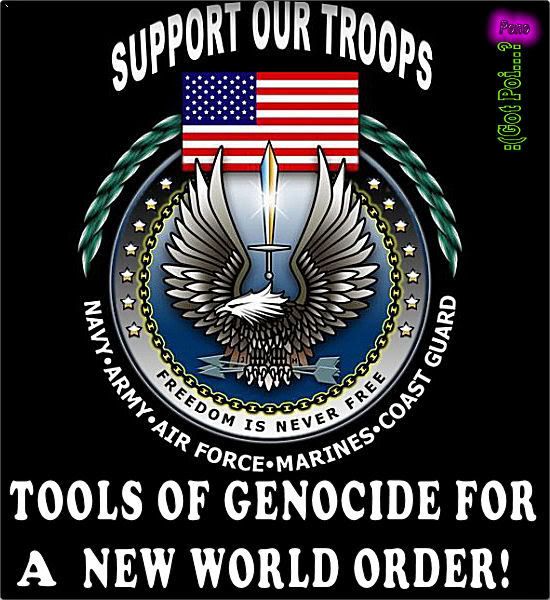
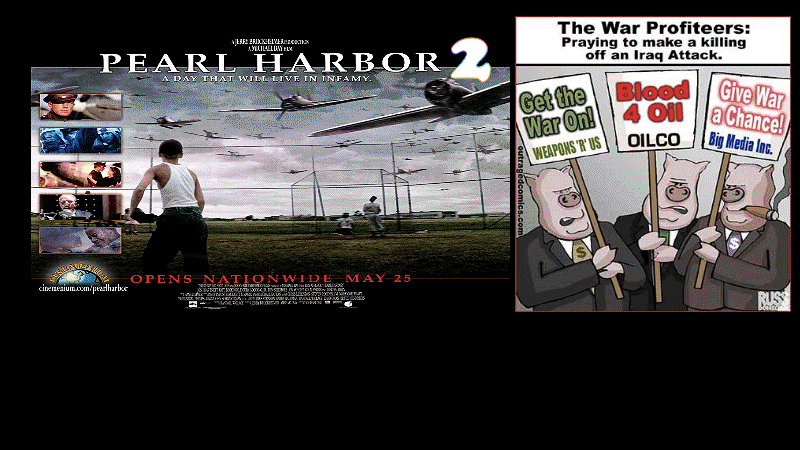
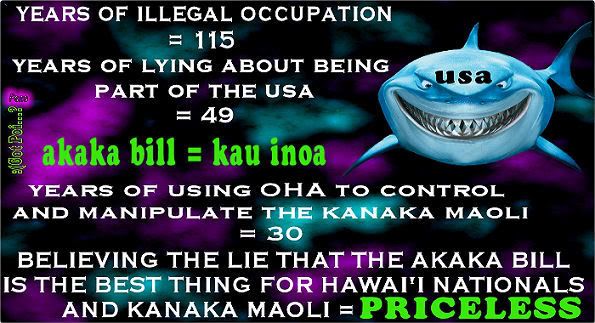
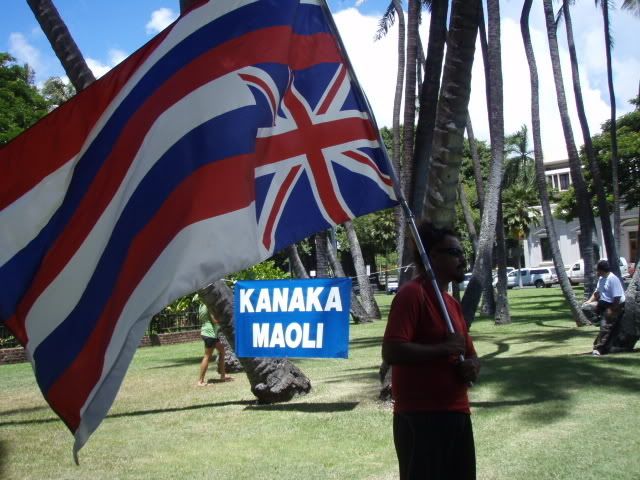
 The Army doesn’t know how much depleted uranium it has lost in Hawai‘i.
The Army doesn’t know how much depleted uranium it has lost in Hawai‘i. The Army doesn’t know how much depleted uranium it has lost in Hawai‘i.
The Army doesn’t know how much depleted uranium it has lost in Hawai‘i. The Army doesn’t know how much depleted uranium it has lost in Hawai‘i.
The Army doesn’t know how much depleted uranium it has lost in Hawai‘i.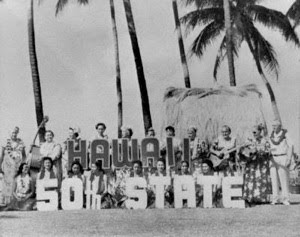 What Is It?Click Here To Find Out
What Is It?Click Here To Find Out





 BUT WOULD YOU?StopAkakaPetition.com Help STOP Hawaiian Land Theft
BUT WOULD YOU?StopAkakaPetition.com Help STOP Hawaiian Land Theft
